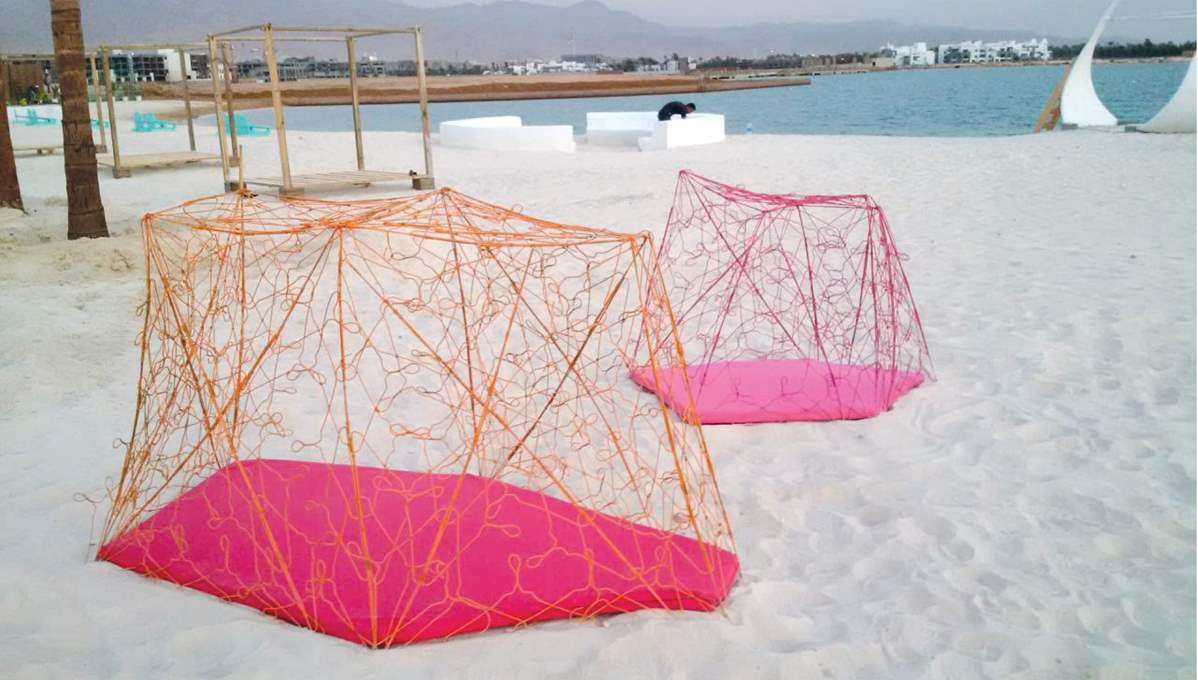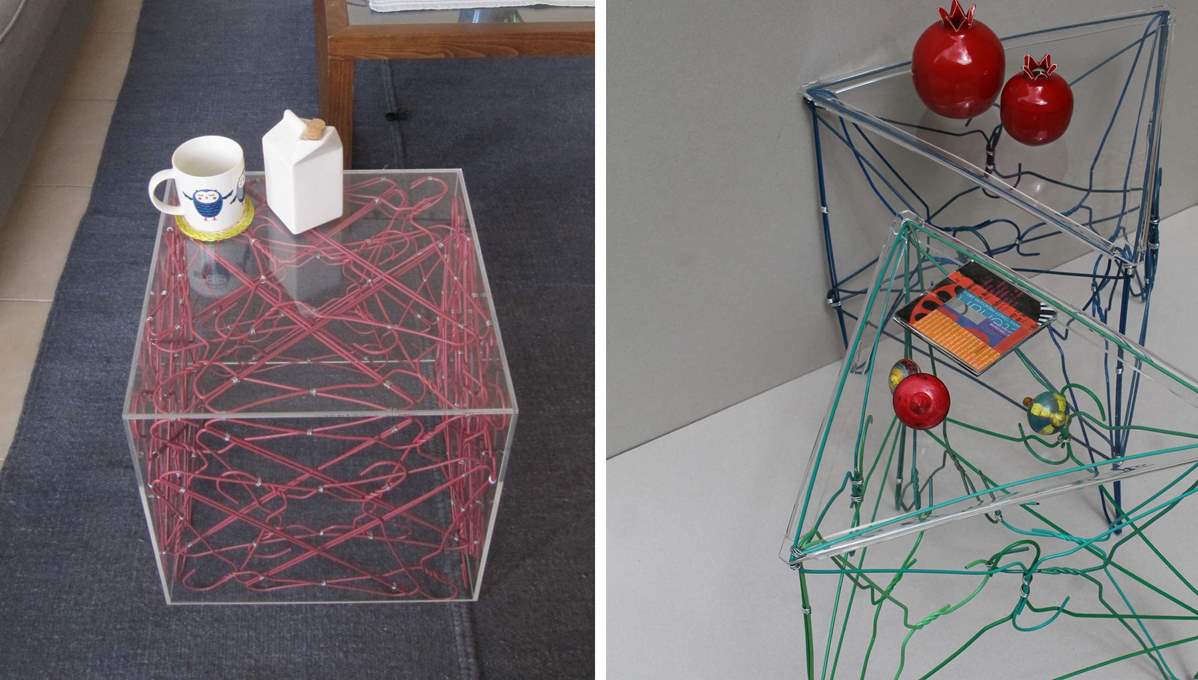AMMAN —
Onur Lambaz, a local designer, artist, and interior designer, is pushing the boundaries of art beyond tradition with “
Hangit”; an ongoing project in which she creates intricate and geometric art pieces out of clothes hangers.
اضافة اعلان
Her creative passion for
recycling and reshaping mundane objects began during her early childhood. “As a child, I used to always create 3D models and do some projects with recycling, finding trash items and turning them into things,” she said in an interview with Jordan News. “So, this is in my nature.”
According to Lambaz, her inspiration for the project came out of the blue. “It came naturally to me when we were connecting our hangers to give back to the dry cleaners. I just took a look at them, and they were bright, blue colored, and in a neat stack. So. it occurred to me that I should try doing something with them.”
This marked the beginning of her journey as a creator of intricate and sophisticated designs from a household product that tends to be neglected. Lambaz takes pride in her ability to create art through less traditional and more environmentally friendly media. “My message is that everyone can use existing objects to create artwork. Why go for materials that are harmful for the environment?”
“As a child, when I started with recycling, it was more of what was available for me to use. I would see things that were thrown around, and I would look at them and think of what I can do with them,” the designer recalled, adding: “As a child I didn’t have the environment in mind, but as a grown-up, yes, I am environmentally conscious. I do like to use something available rather than something that can be harmful like using dyes and new materials and cutting down trees. So I like to have my media as reused items.”
But not everyone accepts Lambaz’s eccentric choice of medium. “I feel (that) people here, they like to go for the traditional, something that is not different,” she said. “So they like to buy a piece, and just hang it on the wall, and it has to be traditional with the frame.”
This hesitance of some locals to step out of their artistic comfort zones has restricted Lambaz’s audience, which she described as “designers, Jordanians who are open-minded, and foreigners, and expats who are here for a temporary time.”
But these limitations have not deterred her faith in her own style. “My work is unique. I’m not doing something that anyone does, or (that) you could find in any country anywhere. I do find that it’s unique and I wouldn’t like to go into another material just because people want me to. Like furniture pieces,” Lambaz said. “Everyone everywhere does furniture pieces and uses wood. So I won’t stop using my materials, even if no one wants to acquire it or have it at home. It’s unique, and I believe in it after all.”
Despite her narrow audience, Lambaz is not lacking in commissions. Cafes, retail stores, and local designers often reach out to her to have her work displayed in their establishments; requesting anything from furniture designs to intricate sculptures, all within her full creative control. Some have even asked for full installations of her work. She cited the latter as her favorite type of job, as it allows her to use the full creative range.
Even with her success as a commissioned artist, she says that money is the least of her concerns. “I have my job to support me financially, so I don’t need to change what I’m doing as a hobby,” she said. “I think artists do have that mentality because they (make) art because they love it, not to support themselves financially.”


Read more
Culture & Arts stories.





